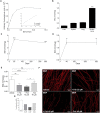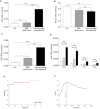Sphingomyelin as a myelin biomarker in CSF of acquired demyelinating neuropathies
- PMID: 28798317
- PMCID: PMC5552737
- DOI: 10.1038/s41598-017-08314-1
Sphingomyelin as a myelin biomarker in CSF of acquired demyelinating neuropathies
Abstract
Fast, accurate and reliable methods to quantify the amount of myelin still lack, both in humans and experimental models. The overall objective of the present study was to demonstrate that sphingomyelin (SM) in the cerebrospinal fluid (CSF) of patients affected by demyelinating neuropathies is a myelin biomarker. We found that SM levels mirror both peripheral myelination during development and small myelin rearrangements in experimental models. As in acquired demyelinating peripheral neuropathies myelin breakdown occurs, SM amount in the CSF of these patients might detect the myelin loss. Indeed, quantification of SM in 262 neurological patients showed a significant increase in patients with peripheral demyelination (p = 3.81 * 10 - 8) compared to subjects affected by non-demyelinating disorders. Interestingly, SM alone was able to distinguish demyelinating from axonal neuropathies and differs from the principal CSF indexes, confirming the novelty of this potential CSF index. In conclusion, SM is a specific and sensitive biomarker to monitor myelin pathology in the CSF of peripheral neuropathies. Most importantly, SM assay is simple, fast, inexpensive, and promising to be used in clinical practice and drug development.
Conflict of interest statement
The authors declare that they have no competing interests.
Figures




References
Publication types
MeSH terms
Substances
LinkOut - more resources
Full Text Sources
Other Literature Sources
Medical
Research Materials

